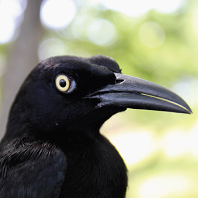The avifauna of Pálpite, Ciénga de Zapata, Cuba, and the importance of the area for globally threatened and endemic birds
##plugins.themes.bootstrap3.article.main##
Resumen: La avifauna de Pálpite, Ciénaga de Zapata, Cuba, y la importancia del área para aves globalmente amenazada y endémico- Presentamos aquí los resultados de trabajo de campo en el bosque semideciduo y bosque de ciénaga temporalmente inundados en la región de Pálpite, Ciénaga de Zapata, Cuba, durante los años de 1998 al 2002, y los meses de enero–mayo, julio, septiembre y octubre. En total, 99 especies de aves han sido registradas en la área, incluyendo seis globalmente amenazadas o casi-amenazadas, y 15 endémicos, una proporción bastante alta de especies. La abundancia relativa en todas estaciones se presenta para todas las especies, con notas sobre la nidifación, estructura de la vegetación, alimentación y hábitat. Adicionalmente, el Potú Nyctibius jamaicensis ha sido registrado en la área, el cual se registró recientemente para Cuba y conocido en pocas localidades. Notas sobre las poblaciones de especies amenazadas en la área son presentadas, con otros interesantes registros.
Palabras clave: avifauna, Catharus fuscescens, Ciénaga de Zapata, Cuba, endémico, especies amenazada, Geotrygon caniceps
Abstract: We present the results of fieldwork in the semi-deciduous and seasonally inundated woodland around Pálpite, in the Ciénaga de Zapata, Cuba, from 1998 to 2002, in January–May, July, September, and October. In total, 99 bird species occur in the area, including six considered globally threatened or near threatened, and 15 that are Cuban endemics, a remarkably high proportion of the overall total. Relative and seasonal abundance is presented for all species, along with notes concerning habitat use, foraging strata and breeding. Additionally, Northern Potoo, Nyctibius jamaicensis, has been recorded in the area, a species only recently found in Cuba and still known from few localities in the island. Notes concerning the populations of threatened species in the area are also presented, along with other interesting records.
Key words: avifauna, Catharus fuscescens, Ciénaga de Zapata, Cuba, endemics, Geotrygon caniceps, threatened species

